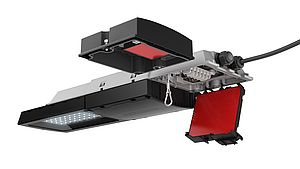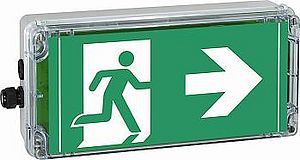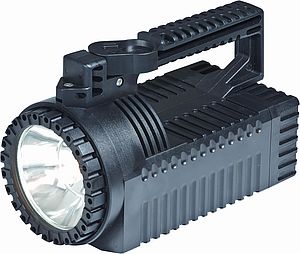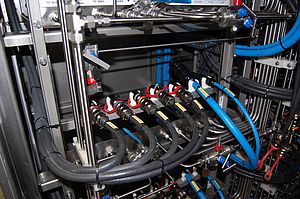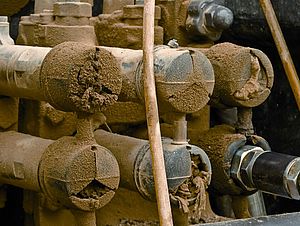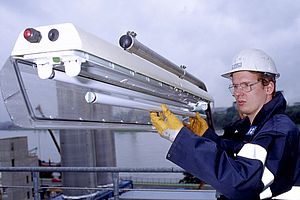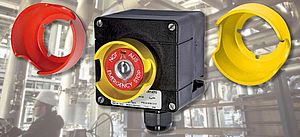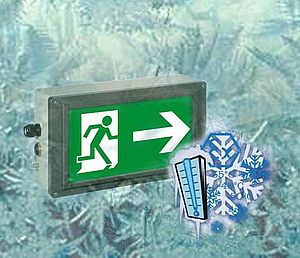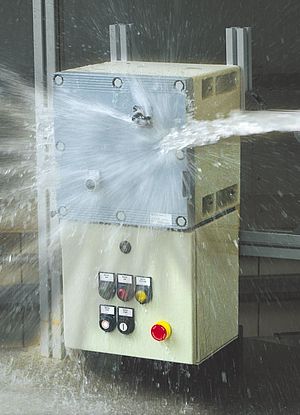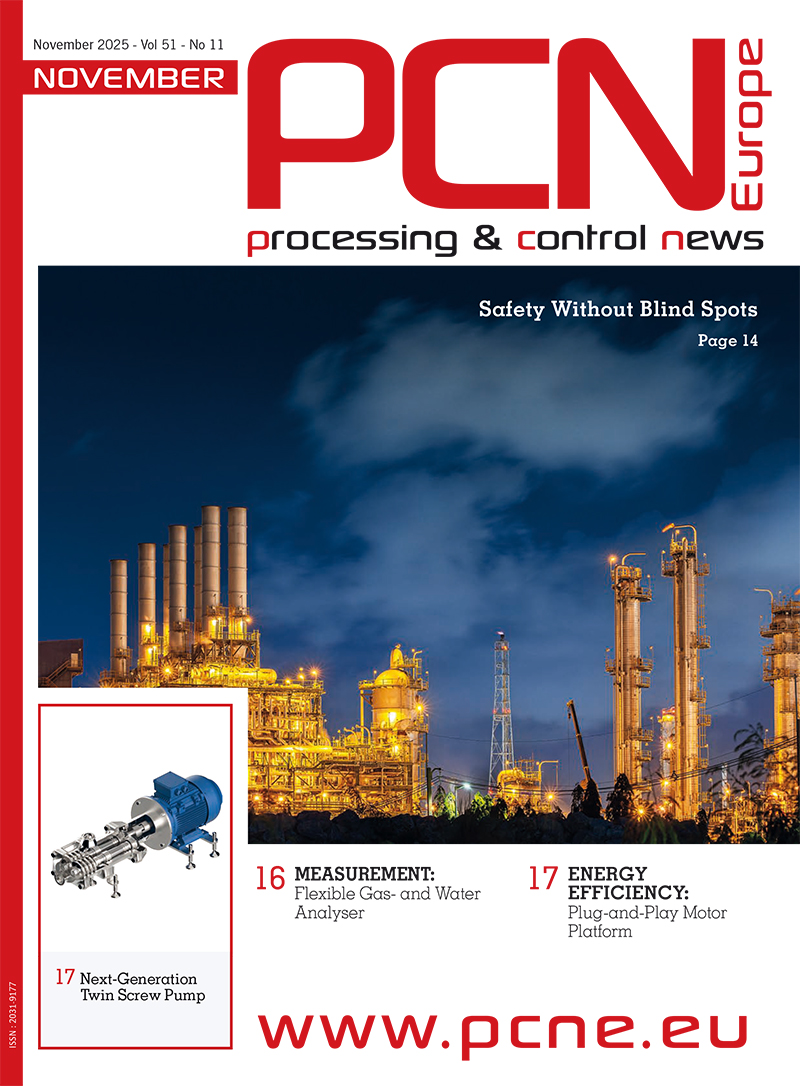How can companies reduce the risk of dust explosions occurring in the workplace and what are the current standards relating to explosion-proof electrical equipment installed in these areas. The risk of a dust explosion occurring in the workplace is not as remote a possibility as people might think. A dust explosion requires only three things: air, combustible dust and a source of ignition such as an electrical spark or hot surface. Indeed, many companies are potentially at risk here. Why? Because combustible dusts are present in many process manufacturing environments. Wood shavings, carbon dust, flour, custard powder, sugar, coffee, tea and aluminium dust are just some examples of highly combustible dusts. The problem is when these combustible dusts are left to gather on hot surfaces in a workplace, such as on an overheated electric motor or fan. This can cause smouldering fires to occur, or can cause an explosion when the dust is kicked up, for example, by a person opening a nearby window. Dust explosions can have catastrophic consequences because the initial shock wave resulting from the explosion kicks up more dust, which triggers a chain reaction through the plant, often resulting in mass destruction of equipment and buildings, as well as causing possible death or injury to employees. Therefore, as potential sources of ignition, all electrical equipment installed in these areas, including mixers, filling hoppers, conveyor systems, mills, silos, dust extraction plant, kilns and drying systems, need to be adequately protected and designed to operate under these conditions. Directors, company owners, plant managers and maintenance engineers, in fact anyone who is responsible for the health and safety of employees or for sourcing electrical equipment for hazardous areas – needs to be fully aware of the risks of dust explosions, the European Directives and standards relating to electrical equipment installed in hazardous areas and the measures that can be taken to eliminate the risk of dust explosions occurring. Owners of new equipment are governed by the compulsory European directive 1999/92/EC, implemented in the UK as the ‘Dangerous Substances and Explosive Atmospheres Regulations 2002’ (DSEAR). From 2006, this directive also includes ‘old’ as well as ‘new’ equipment. In summary, owners are required to identify the risks of explosion; implement explosion protection measures such as avoiding sources of ignition (secondary explosion protection); define zones in areas at risk from dust explosions; create an explosion protection document; use suitable production equipment; and to create a test plan. For electrical equipment in areas at risk from dust explosions, a new series of standards, EN61241-… was introduced. This stricter standard came into effect from the 1st October 2008, which supercedes the existing standard EN 50 281. Within this new series of standards, one of the main protection types for production equipment at risk from dust explosions in accordance with ATEX Directive 94/9/EC, is the protection by enclosures type "tD". This protection type is where the electrical production equipment is equipped with an enclosure to prevent dust penetration and where measures have been taken to limit the surface temperature have been implemented. The main changes to this standard concern the following areas: impact energy – high demand on impact energy as in Zone 1; electrostatics – electrostatic conductance of the enclosure; and ageing resistance – high demand on the ageing resistance of the plastic enclosure. Owners need to be aware of these changes when sourcing or upgrading electrical equipment for hazardous dust areas. Hazardous areas for explosive dust atmospheres are classified into three Zones: 20, 21 and 22. - Zone 20 is an area in which an explosive atmosphere in the form of a cloud of combustible dust in the air is present continuously, or for long periods or frequently - Zone 21 is an area in which an explosive atmosphere in the form of a cloud of combustible dust in the air is likely to occur in normal operation occasionally - Zone 22 is an area in which an explosive atmosphere in the form of a cloud made up of combustible dust in the air is not likely to occur in normal operation but, if it does occur, will persist for a short period only. In addition, on the 6th April 2008, the Corporate Manslaughter and Corporate Homicide Act 2007 came into force in the UK, which means companies cannot afford to cut corners or delay the implementation of appropriately protected electrical equipment. If they do, these firms could face sever fines or even imprisonment should a dust explosion occur. The statistics show that companies need to act now without delay. A staggering 2,000 dust explosions occur in Europe every year and all types of companies are affected, including manufacturers of sugar, coal, cocoa, flour-based products, milk powder, tea, grain, fodder and tobacco, as well as wood and metal processing companies. One recent example of how costly – both in terms of lives lost and damage to plant – dust explosions can be, occurred in February 2008 at the Dixie Crystal Refinery, part of the Imperial Sugar Company and one of the leading sugar manufacturers in the USA. A massive sugar dust explosion killed at least six people and injured more than 60, some seriously, who had to be rushed by helicopter 125 miles away to a special hospital for burns victims. The sugar silos of the filling plant had exploded during the night shift, setting fire to most of the plant. This is just one of many dust explosions that occur around the world. It is estimated that more than 300 dust explosions in grain silos, sugar plants and food companies in the last 30 years in the US alone have cost the lives of more than 120 people. A dust explosion requires three ingredients: air, combustible dust and a source of ignition. Combustible dust-air mixtures have different ignition temperatures. The surface temperature of the equipment in areas where there is a risk of dust explosions is allowed to reach two-thirds of the minimum ignition temperature of the surrounding dust-air mixture. With a 5mm thick layer of dust, this surface temperature must be at least 75°K below the minimum ignition temperature of the dust (glow temperature). It is therefore the equipment owner’s responsibility to ensure that the cleaning and maintenance intervals of installed equipment with a dust explosion risk are scheduled so that no dust layers thicker than 5mm are allowed to form. At higher dust deposits, the minimum ignition (glow) temperature of the dust is reduced significantly. The goal of the current European Directives is to protect operating plants from dust explosions and to prevent damage or personal injury. The explosion protection measures are divided into ‘Owner’ and ‘Manufacturer’ Directives. Again, the objective is to implement all necessary measures to ensure that explosion-protected products can only be operated if they do not pose any danger to health and safety and provided that they are correctly assembled, installed, maintained and used for their intended purpose.
Dust in the workplace - an explosive topic
How can companies reduce the risk of dust explosions occurring in the workplace
- by Cooper Crouse-Hinds GmbH
- February 1, 2009
- 573 views
Disclaimer: Content published by TIM Global Media, including text, images, and videos, is either created in-house or provided by Suppliers/Manufacturers with their approval. Suppliers/Manufactures warrant that their materials do not infringe third-party rights and agree to indemnify and hold TIM Global Media harmless from any related claims.







